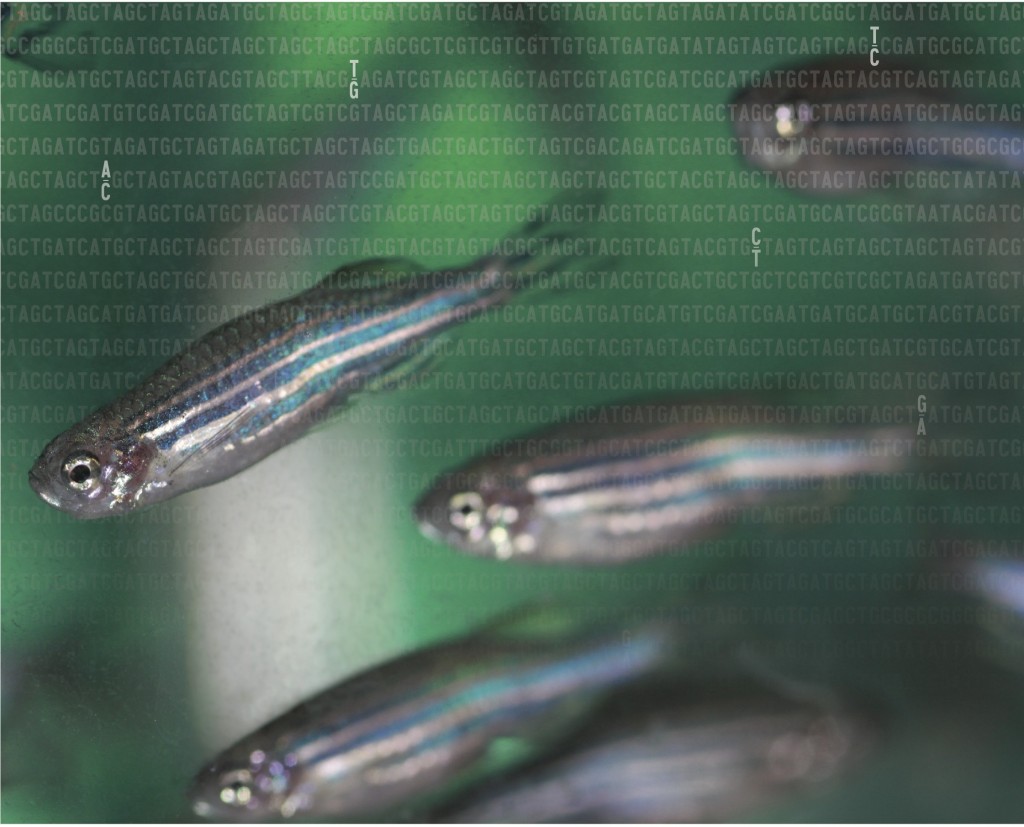Zebrafish develop fast. They are conveniently small. Their embryos are stunningly transparent. But despite their many powerful advantages as a genetic model, they have a drawback that complicates the use of methods like CRISPR, morpholino knockdown, and RNAseq: they are not great inbreeders.
Because inbred zebrafish stocks tend to be sickly, most research relies on strains with polymorphism rates of almost 1 in 100 bases. This can be a major problem for techniques that depend on precise knowledge of the target sequence. For example, in some contexts, a mismatch of a single base is enough to severely reduce the cutting efficiency of Cas9.
One way around the problem is to know the locations of the polymorphic sites. In the latest issue of GENETICS, LaFave et al. describe NHGRI-1, a healthy and fecund zebrafish line in which the majority of polymorphisms have been identified by deep sequencing of the founder parents. The new line allows selection of target sequences for genomics and gene editing experiments from the invariant portions of the genome, side-stepping the issue of polymorphism mismatches. NHGRI-1 should be particularly valuable in high-throughput applications that leave little room for tweaking and troubleshooting individual experiments, ultimately helping the research community make the most of all those advantages of the zebrafish model.
CITATION:
LaFave M.C., M. Vemulapalli, J. C. Mullikin & S. M. Burgess (2014). A Defined Zebrafish Line for High-Throughput Genetics and Genomics: NHGRI-1, Genetics, 198 (1) 167-170. DOI: http://dx.doi.org/10.1534/genetics.114.166769 http://www.genetics.org/content/198/1/167

Screenshot of the UCSC browser custom tracks for NHGRI-1. The top track indicates the bases that were invariant in both fish sequenced. The white regions indicate either variation in at least one fish or insufficient read depth to confidently call the region as invariant. The second track indicates two nonsense mutations detected in this region. The letter indicates the alternative allele, and the color indicates whether the mutation was homozygous (red) or heterozygous (blue) in the NHGRI-1 population.
From LaFave et al.













